8 Search Results Found For : "F اسلات جزیره〈ωωω,RTЗЗ,TOP〉코드 b77〉شرط بندی ساموآైآنها را نگه دارید㎥اسلات Seoyoonัمکانی برای تماشای ورزش△رده بندی فوتبال حرفه ای انگلستان🍖خصوصی ورزشی هم رفته̧نکات شرط بندی ورزشی֛شرط بندی مالت͊.koe/"
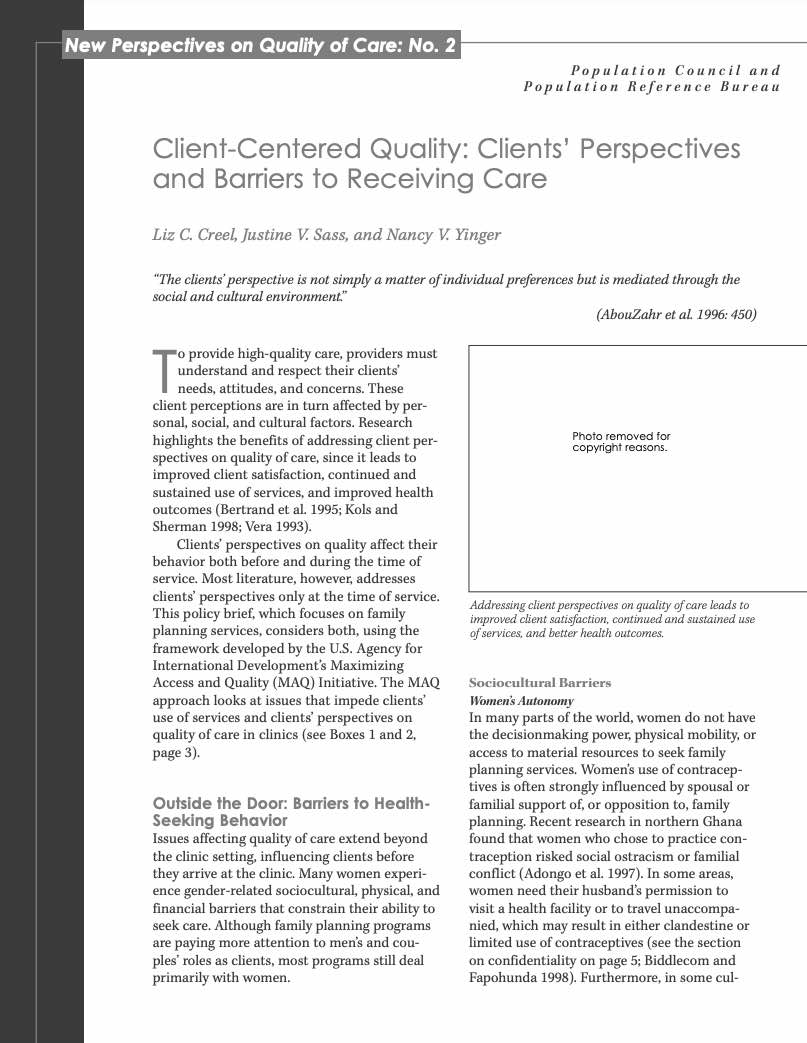
Client-Centered Quality: Clients’ Perspectives and Barriers to Receiving Care
To provide high-quality care, providers must understand and respect their clients' needs, attitudes, and concerns. These client perceptions are in turn affected by personal, social, and cultural factors.
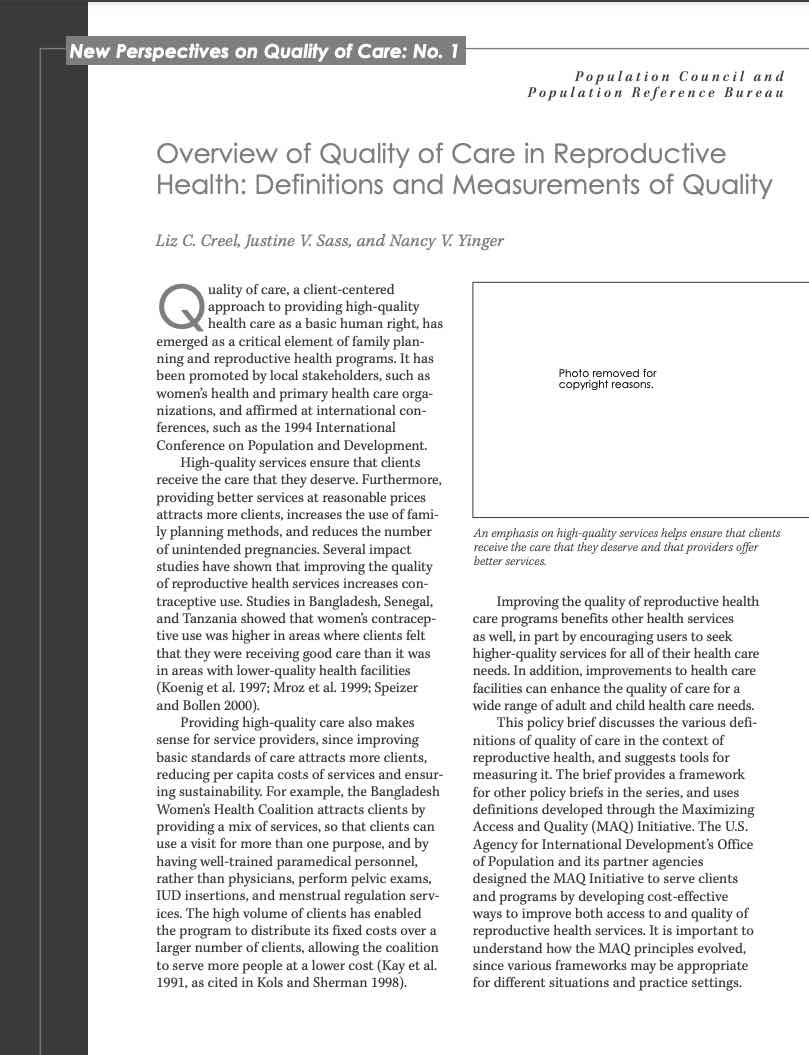
Overview of Quality of Care in Reproductive Health: Definitions and Measurements of Quality
(2002) Quality of care, a client-centered approach to providing high-quality health care as a basic human right, has emerged as a critical element of family planning and reproductive health programs.
Contraceptive Needs of Older Nigerian Women Are Neglected
2013) Throughout the world, women ages 35 and older are often left out of conversations on contraception. Many of these women do not think they are at risk of pregnancy because of infrequent sex, marital disruption, the lack of a regular partner, or their perception that they are infertile—and thus they do not see the need to use contraception.
Finding the Balance: Population and Water Scarcity in the Middle East and North Africa
(2002) The Middle East and North Africa (MENA)* is the most water-scarce region of the world. Home to 6.3 percent of the world's population, the region contains only 1.4 percent of the world's renewable fresh water.
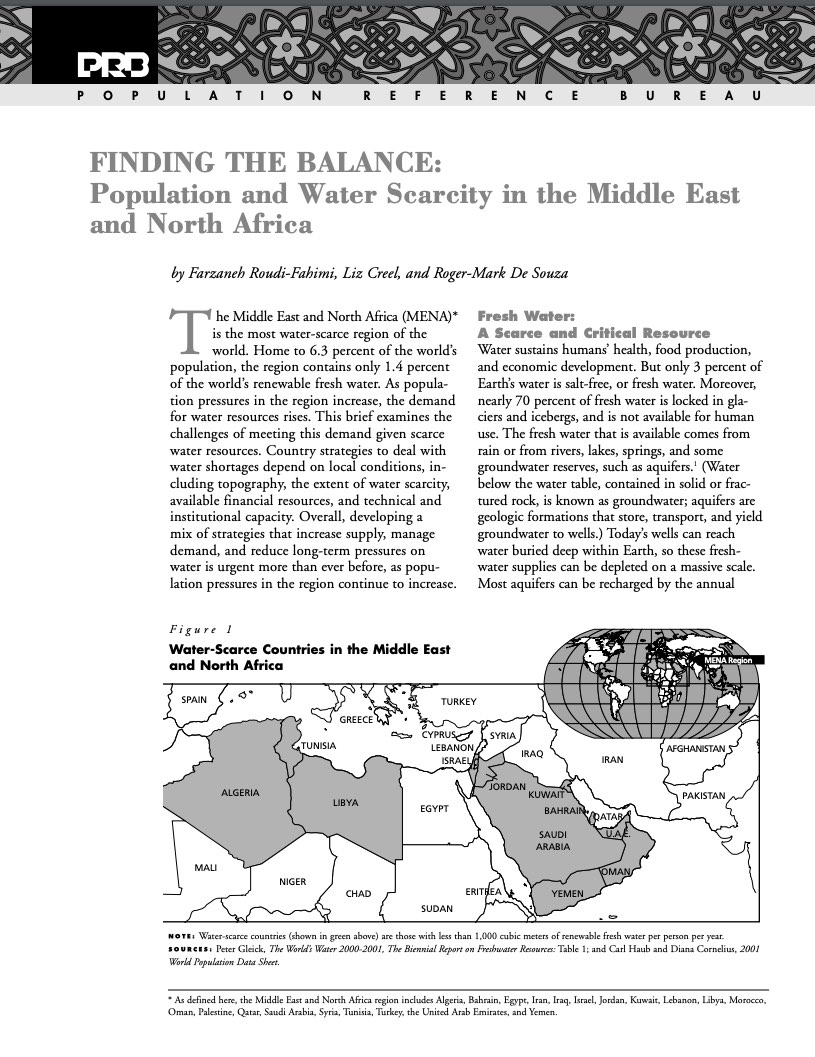
Report. Population and Water Scarcity in the Middle East and North Africa
(2002) The Middle East and North Africa (MENA)* is the most water-scarce region of the world. Home to 6.3 percent of the world's population, the region contains only 1.4 percent of the world's renewable fresh water.
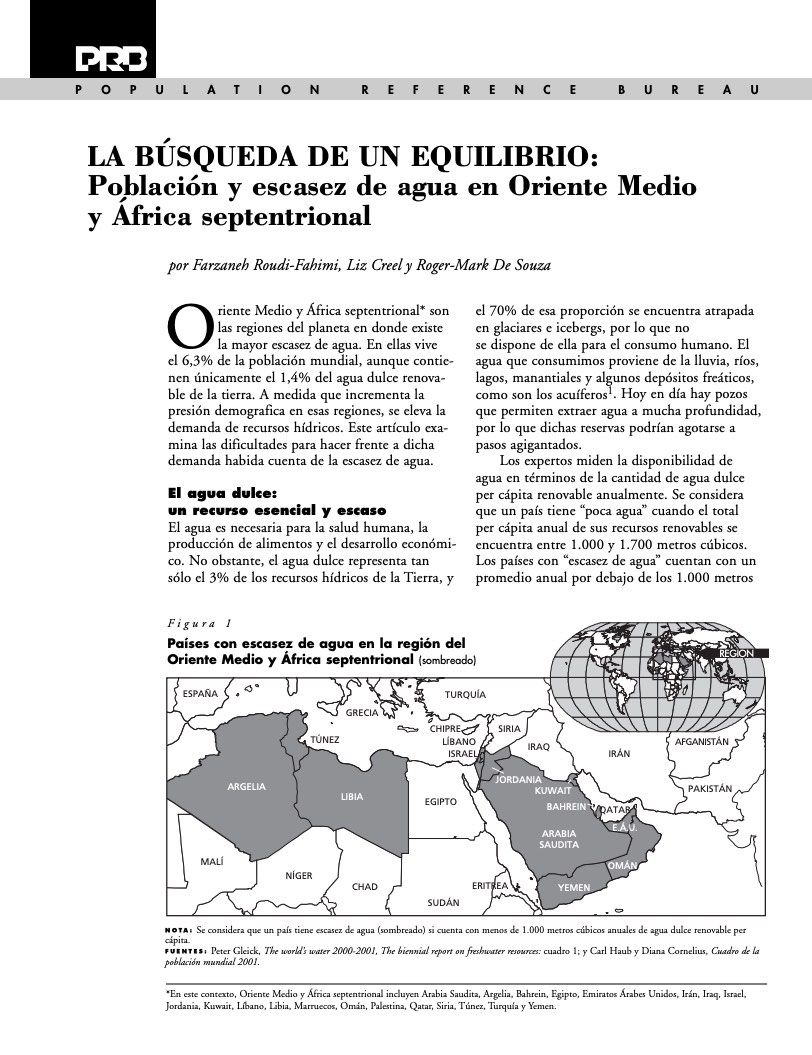
Report. Población y escasez de agua en Oriente Medio y África septentrional
(2002) The Middle East and North Africa (MENA)* is the most water-scarce region of the world. Home to 6.3 percent of the world's population, the region contains only 1.4 percent of the world's renewable fresh water.
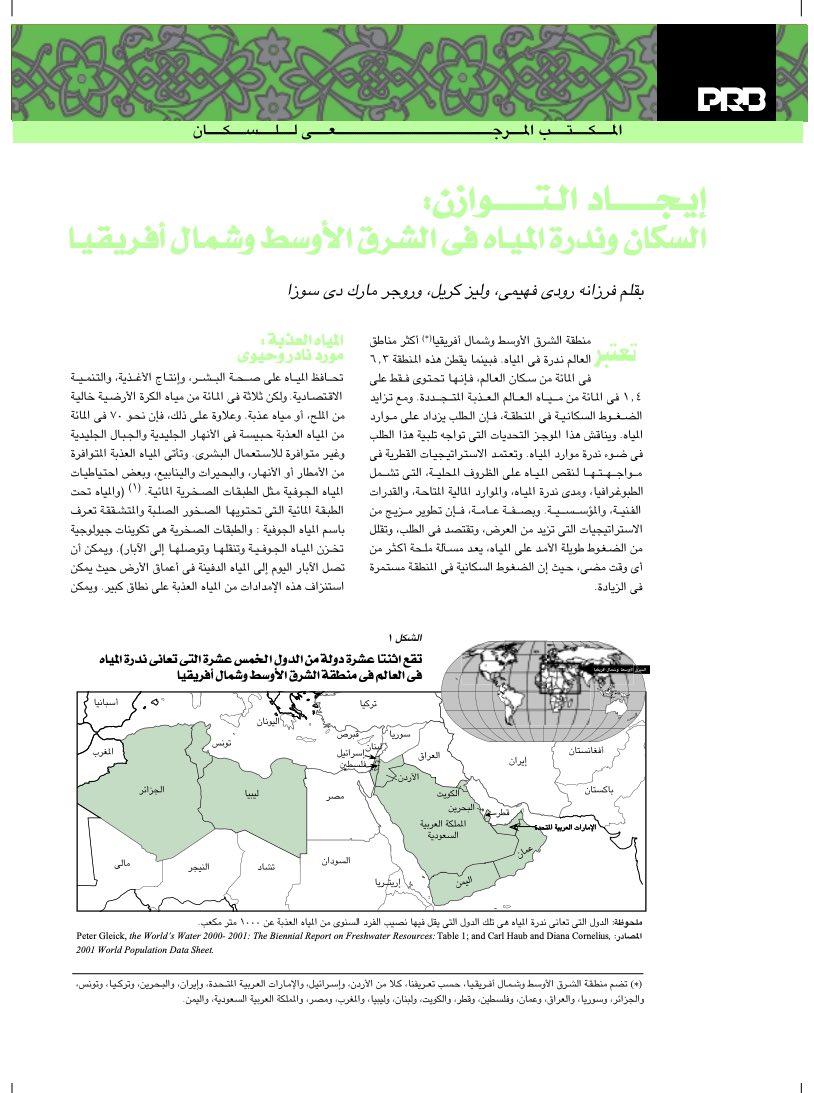
Report. Population and Water Scarcity in the Middle East and North Africa (Arabic)
(2002) The Middle East and North Africa (MENA)* is the most water-scarce region of the world. Home to 6.3 percent of the world's population, the region contains only 1.4 percent of the world's renewable fresh water.
